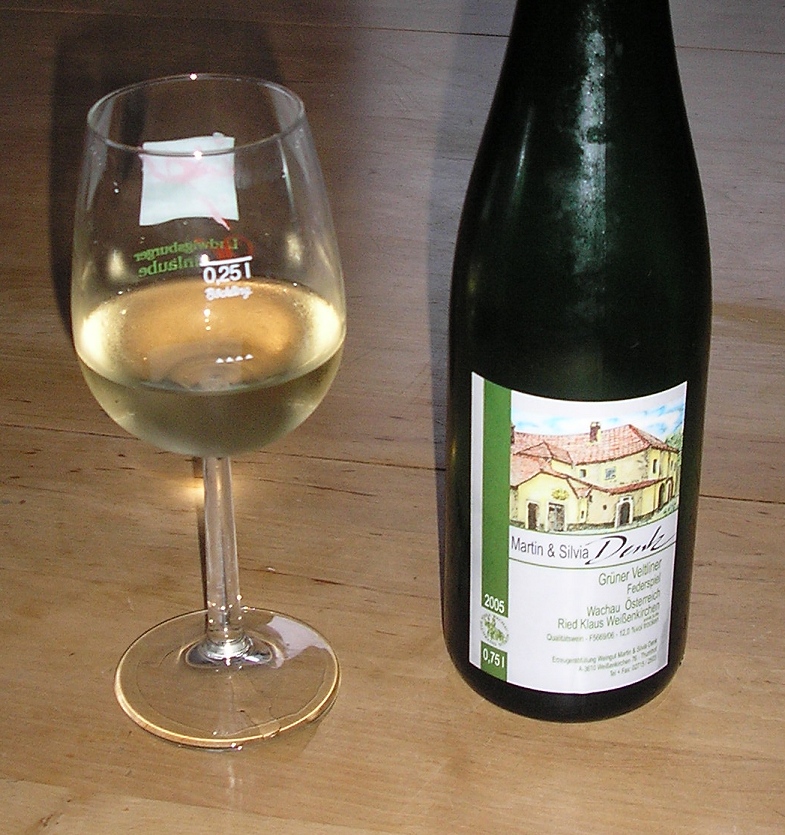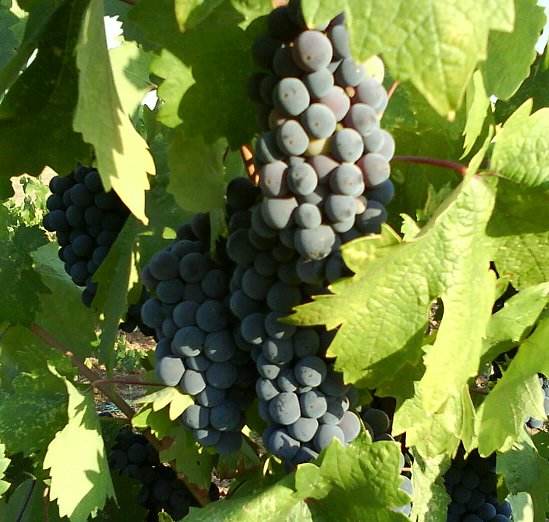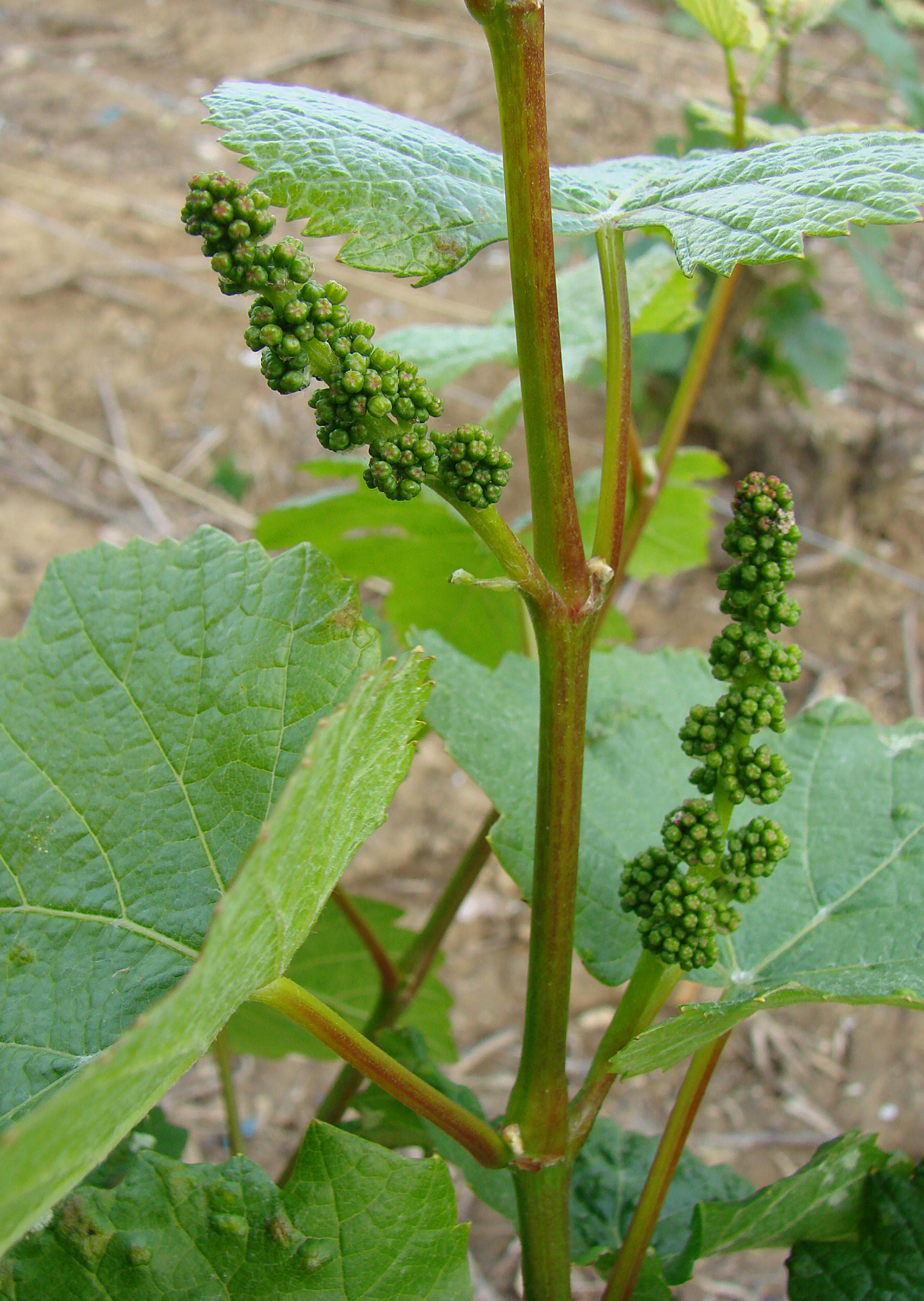|
Wildbacher
Wildbacher is a dark-skinned grape variety and specialty of the Styria region of Austria.The name "Wildbacher" is derived from its supposed location of origin, Wildbach, which is part of the city of Deutschlandsberg. It is a very old variety said to go back to the Celts, and manuscripts first record the name in the 16th century.Moser, Peter ''The Ultimate Austrian Wine Guide'' Falstaff Productions Ltd. (Falstaff Verlags GmbH) 2008 The variety is not particularly demanding in terms of soil though it does require warm sites with sufficient aeration as it is prone to rot. The grapes tend to ripen late and yields can be inconsistent. Wines made from Wildbacher typically exhibit red berry and herbal flavors with a refreshing acidity. Schilcher Schilcher is a specialty red wine from Styria made from Wildbacher grapes. Genuine Schilcher comes exclusively from West Styria although this style of wine is also made in South Styria and Southeast Styria. Schilcher wines are rosés wit ... [...More Info...] [...Related Items...] OR: [Wikipedia] [Google] [Baidu] |
Austrian Wine
Austrian wines are mostly dry white wines (often made from the Grüner Veltliner grape), though some sweeter white wines (such as dessert wines made around the Neusiedler See) are also produced. About 30% of the wines are red, made from Blaufränkisch (also known as Lemberger, or as Kékfrankos in neighbouring Hungarian wine, Hungary), Pinot noir and locally bred varieties such as Zweigelt.Calculation by Austrian Wine based on data from BML/IACS (as at 3 July 2024). Moving annual total (MAT) from July 2023 to July 2024. Four thousand years of winemaking history counted for little after the "1985 diethylene glycol wine scandal, antifreeze scandal" of 1985, when it was revealed that some wine brokers had been adulterant, adulterating their wines with diethylene glycol. The scandal destroyed the market for Austrian wine and compelled Austria to tackle low standards of bulk wine production, and reposition itself as a producer of quality wines. The country is also home to Riedel (gla ... [...More Info...] [...Related Items...] OR: [Wikipedia] [Google] [Baidu] |
Schilcher (wine)
Schilcher is a wine produced solely in the Austrian state of Styria, in the districts of Deutschlandsberg and Voitsberg. The Schilcher wine itself is a distinct rosé made from the indigenous Blauer Wildbacher grape. The colour ranges from a light onion tinge to a deep ruby. The grape was once a wild variety that was said to contain alcohol compounds that, allegedly, would induce wild inebriation, hence its colloquial name ''Rabiatperle'' - rabid pearl. Over time, Schilcher has become a regarded wine in Austria. The name Schilcher originates from the Middle High German word ''schillern'' meaning to radiate with colour. Wine style Wine from the Schilcher grape is also used for blending and for the production of sparkling wine. The wine has a strong acidity and is renowned for its exclusive aroma, often associated with strawberries. It should be drunk relatively young at a temperature of 9 to 11 °C accompanied with traditional Austrian cold cured meats. Authentic Schilcher wine ... [...More Info...] [...Related Items...] OR: [Wikipedia] [Google] [Baidu] |
Rosé
A rosé () is a type of wine that incorporates some of the wine color, color from the grape skins, but not enough to qualify it as a red wine. It may be the oldest known type of wine, as it is the most straightforward to make with the Maceration (wine), skin contact method. The pink color can range from a pale "onionskin" orange to a vivid near-purple, depending on the grape varieties used and winemaking techniques. Usually, the wine is labelled ''rosé'' in French, Portuguese, and English-speaking countries, rosado in Spanish, or rosato in Italian. There are three major ways to produce rosé wine: skin contact, ''saignée'', and Blending (alcohol production), blending. Rosé wines can be made still, Semi-sparkling wines, semi-sparkling or sparkling wine, sparkling and with a wide range of sweetness (wine), sweetness levels from highly dryness (taste), dry Provençal (wine), Provençal rosé to sweet White Zinfandels and blushes. Rosé wines are made from a wide variety of gra ... [...More Info...] [...Related Items...] OR: [Wikipedia] [Google] [Baidu] |
Vitis Vinifera
''Vitis vinifera'', the common grape vine, is a species of flowering plant, native to the Mediterranean Basin, Mediterranean region, Central Europe, and southwestern Asia, from Morocco and Portugal north to southern Germany and east to northern Iran. , there were between List of grape varieties, 5,000 and 10,000 varieties of ''Vitis vinifera'' grapes though only a few are of commercial significance for wine and table grape production. The wild grape is often classified as ''Vitis vinifera'' ''sylvestris'' (in some classifications considered ''Vitis sylvestris''), with ''Vitis vinifera'' ''vinifera'' restricted to cultivated forms. Domesticated vines have hermaphrodite#Plants, hermaphrodite flowers, but ''sylvestris'' is plant sexuality, dioecious (male and female flowers on separate plants) and pollination is required for fruit to develop. Grapes can be eaten fresh or dried to produce raisins, Sultana (grape)#Raisins, sultanas, and Zante currant, currants. Grape leaves are used ... [...More Info...] [...Related Items...] OR: [Wikipedia] [Google] [Baidu] |
Austria
Austria, formally the Republic of Austria, is a landlocked country in Central Europe, lying in the Eastern Alps. It is a federation of nine Federal states of Austria, states, of which the capital Vienna is the List of largest cities in Austria, most populous city and state. Austria is bordered by Germany to the northwest, the Czech Republic to the north, Slovakia to the northeast, Hungary to the east, Slovenia and Italy to the south, and Switzerland and Liechtenstein to the west. The country occupies an area of and has Austrians, a population of around 9 million. The area of today's Austria has been inhabited since at least the Paleolithic, Paleolithic period. Around 400 BC, it was inhabited by the Celts and then annexed by the Roman Empire, Romans in the late 1st century BC. Christianization in the region began in the 4th and 5th centuries, during the late Western Roman Empire, Roman period, followed by the arrival of numerous Germanic tribes during the Migration Period. A ... [...More Info...] [...Related Items...] OR: [Wikipedia] [Google] [Baidu] |
Vitis Vinifera Wildbacher Herbstblätter Und Trauben 01
''Vitis'' (grapevine) is a genus of 81 accepted species of vining plants in the flowering plant family Vitaceae. The genus consists of species predominantly from the Northern Hemisphere. It is economically important as the source of grapes, both for direct consumption of the fruit and for fermentation to produce wine. The study and cultivation of grapevines is called viticulture. Most cultivated ''Vitis'' varieties are wind-pollinated with hermaphroditic flowers containing both male and female reproductive structures, while wild species are dioecious. These flowers are grouped in bunches called inflorescences. In many species, such as ''Vitis vinifera'', each successfully pollinated flower becomes a grape berry with the inflorescence turning into a cluster of grapes. While the flowers of the grapevines are usually very small, the berries are often large and brightly colored with sweet flavors that attract birds and other animals to disperse the seeds contained within the berries ... [...More Info...] [...Related Items...] OR: [Wikipedia] [Google] [Baidu] |
Styria
Styria ( ; ; ; ) is an Austrian Federal states of Austria, state in the southeast of the country. With an area of approximately , Styria is Austria's second largest state, after Lower Austria. It is bordered to the south by Slovenia, and clockwise, from the southwest, by the other Austrian states of Carinthia, Salzburg (federal state), Salzburg, Upper Austria, Lower Austria, and Burgenland. The state's capital is Graz, the second largest city in Austria after only Vienna. Name The March of Styria derived its name from the original seat of its ruling Otakars, Otakar dynasty: Steyr, in today's Upper Austria, which in turn derives its name from the namesake river of Steyr, stemming from the Celtic Stiria. In the native German the area is still called "Steiermark", while in English the Latin name "Styria" is used. Until the late 19th century however, the German name "Steyer", a slightly modernized spelling of Steyr, was also common. The ancient link between the city of Steyr and S ... [...More Info...] [...Related Items...] OR: [Wikipedia] [Google] [Baidu] |
Lipizzaner
The Lipizzan or Lipizzaner (, , , , , , ) is a European breed of riding horse developed in the Habsburg Empire in the sixteenth century. It is of Baroque type, and is powerful, slow to mature and long-lived; the coat is usually gray. The name of the breed derives from that of the village of Lipica (), which was part of the Habsburg empire at the time the breed was developed, now in Slovenia, one of the earliest stud farms established; the stud farm there is still active. The breed has been endangered numerous times by warfare sweeping Europe, including during the War of the First Coalition, World War I, and World War II. The rescue of the Lipizzans during World War II by American troops was made famous by the Disney movie '' Miracle of the White Stallions''. The Lipizzaner is closely associated with the Spanish Riding School of Vienna, Austria, where the horses demonstrate the '' haute école'' or "high school" movements of classical dressage, including the highly contro ... [...More Info...] [...Related Items...] OR: [Wikipedia] [Google] [Baidu] |
Veneto
Veneto, officially the Region of Veneto, is one of the 20 regions of Italy, located in the Northeast Italy, north-east of the country. It is the fourth most populous region in Italy, with a population of 4,851,851 as of 2025. Venice is the region's capital while Verona is the largest city. Veneto was part of the Roman Empire until the 5th century AD. Later, after a Feudalism, feudal period, it was part of the Republic of Venice until 1797. Venice ruled for centuries over one of the largest and richest maritime republics and trade empires in the world. After the Napoleonic Wars and the Congress of Vienna, the Venetian Province, former Republic was combined with Lombardy and re-annexed to the Austrian Empire as the Kingdom of Lombardy–Venetia, until that was Italian unification, merged with the Kingdom of Italy in 1866, as a result of the Third Italian War of Independence and of a Plebiscite of Veneto of 1866, plebiscite. Besides Italian language, Italian, most inhabitan ... [...More Info...] [...Related Items...] OR: [Wikipedia] [Google] [Baidu] |
Italian Wine
Italian wine () is produced in every region of Italy. Italy is the country with the widest variety of indigenous grapevine in the world, with an area of under vineyard cultivation, as well as the List of wine-producing regions#Countries, world's largest wine producer and the largest exporter . Contributing 49.8 million Hectolitre, hl of wine in 2022, Italy accounted for over 19.3% of global production, ahead of French wine, France (17.7%) and Spanish wine, Spain (13.8%); the following year, production decreased by 11.5 million hl, and Italy was surpassed by France. Italian wine is also popular domestically among Italians, who consume a yearly average of 46.8 litres per capita, ranking third in world wine consumption. The origins of viticulture, vine-growing and winemaking in Italy has been illuminated by recent research, stretching back even before the Phoenicians and wine, Phoenician, Etruscans and Ancient Greece and wine, Greek settlers, who produced wine in Italy before Ancien ... [...More Info...] [...Related Items...] OR: [Wikipedia] [Google] [Baidu] |






